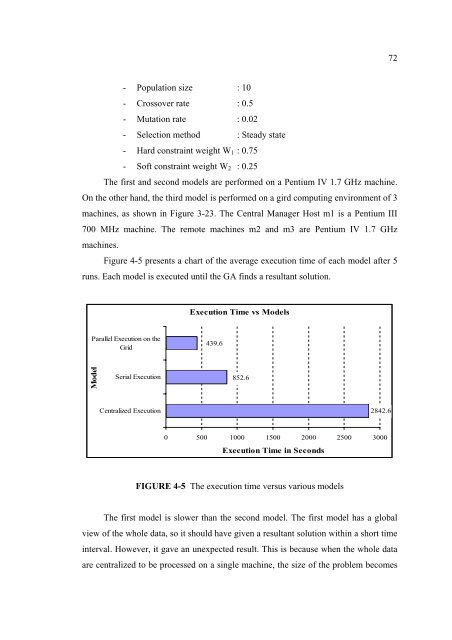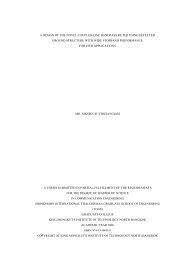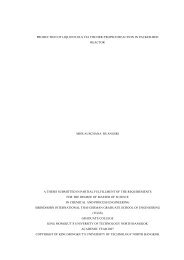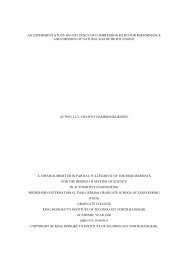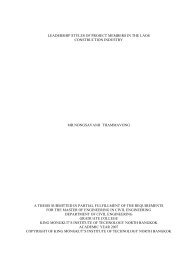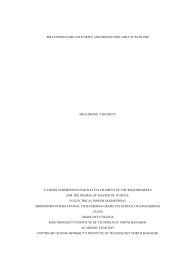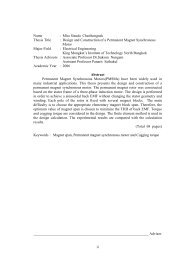a multi-objective bisexual reproduction genetic algorithm for ...
a multi-objective bisexual reproduction genetic algorithm for ...
a multi-objective bisexual reproduction genetic algorithm for ...
You also want an ePaper? Increase the reach of your titles
YUMPU automatically turns print PDFs into web optimized ePapers that Google loves.
72<br />
- Population size : 10<br />
- Crossover rate : 0.5<br />
- Mutation rate : 0.02<br />
- Selection method : Steady state<br />
- Hard constraint weight W 1 : 0.75<br />
- Soft constraint weight W 2 : 0.25<br />
The first and second models are per<strong>for</strong>med on a Pentium IV 1.7 GHz machine.<br />
On the other hand, the third model is per<strong>for</strong>med on a gird computing environment of 3<br />
machines, as shown in Figure 3-23. The Central Manager Host m1 is a Pentium III<br />
700 MHz machine. The remote machines m2 and m3 are Pentium IV 1.7 GHz<br />
machines.<br />
Figure 4-5 presents a chart of the average execution time of each model after 5<br />
runs. Each model is executed until the GA finds a resultant solution.<br />
Execution Time vs Models<br />
Parallel Execution on the<br />
Grid<br />
439.6<br />
Model<br />
Serial Execution<br />
852.6<br />
Centralized Execution<br />
2842.6<br />
0 500 1000 1500 2000 2500 3000<br />
Execution Time in Seconds<br />
FIGURE 4-5 The execution time versus various models<br />
The first model is slower than the second model. The first model has a global<br />
view of the whole data, so it should have given a resultant solution within a short time<br />
interval. However, it gave an unexpected result. This is because when the whole data<br />
are centralized to be processed on a single machine, the size of the problem becomes


